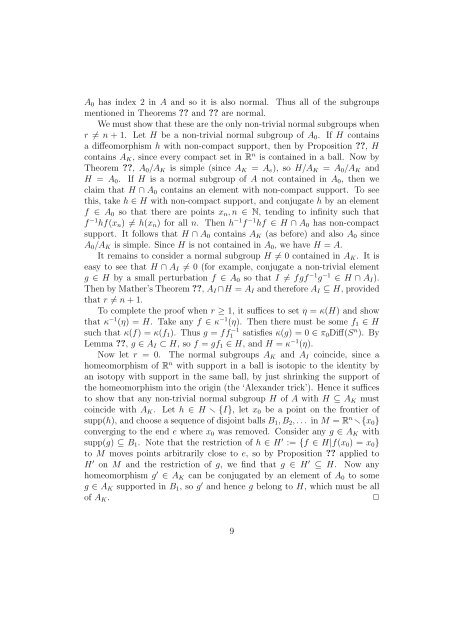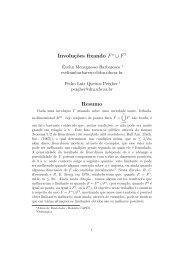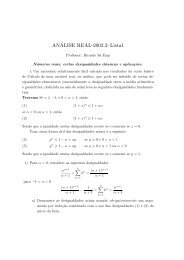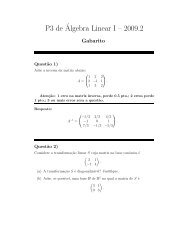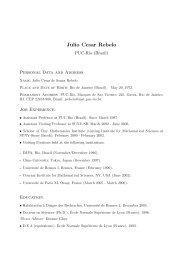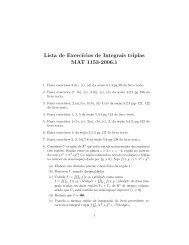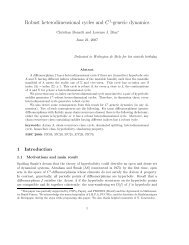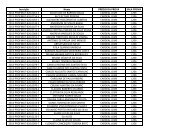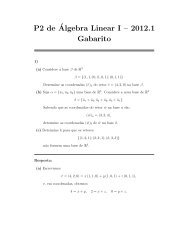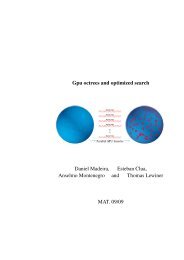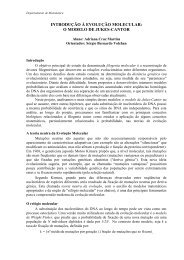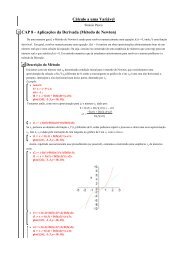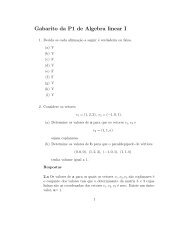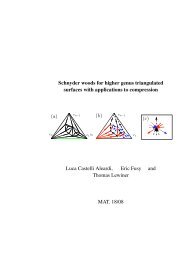NORMAL SUBGROUPS OF DIFFEOMORPHISM AND ...
NORMAL SUBGROUPS OF DIFFEOMORPHISM AND ...
NORMAL SUBGROUPS OF DIFFEOMORPHISM AND ...
Create successful ePaper yourself
Turn your PDF publications into a flip-book with our unique Google optimized e-Paper software.
A 0 has index 2 in A and so it is also normal. Thus all of the subgroups<br />
mentioned in Theorems ?? and ?? are normal.<br />
We must show that these are the only non-trivial normal subgroups when<br />
r ≠ n + 1. Let H be a non-trivial normal subgroup of A 0 . If H contains<br />
a diffeomorphism h with non-compact support, then by Proposition ??, H<br />
contains A K , since every compact set in R n is contained in a ball. Now by<br />
Theorem ??, A 0 /A K is simple (since A K = A e ), so H/A K = A 0 /A K and<br />
H = A 0 . If H is a normal subgroup of A not contained in A 0 , then we<br />
claim that H ∩ A 0 contains an element with non-compact support. To see<br />
this, take h ∈ H with non-compact support, and conjugate h by an element<br />
f ∈ A 0 so that there are points x n , n ∈ N, tending to infinity such that<br />
f −1 hf(x n ) ≠ h(x n ) for all n. Then h −1 f −1 hf ∈ H ∩ A 0 has non-compact<br />
support. It follows that H ∩ A 0 contains A K (as before) and also A 0 since<br />
A 0 /A K is simple. Since H is not contained in A 0 , we have H = A.<br />
It remains to consider a normal subgroup H ≠ 0 contained in A K . It is<br />
easy to see that H ∩ A I ≠ 0 (for example, conjugate a non-trivial element<br />
g ∈ H by a small perturbation f ∈ A 0 so that I ≠ fgf −1 g −1 ∈ H ∩ A I ).<br />
Then by Mather’s Theorem ??, A I ∩H = A I and therefore A I ⊆ H, provided<br />
that r ≠ n + 1.<br />
To complete the proof when r ≥ 1, it suffices to set η = κ(H) and show<br />
that κ −1 (η) = H. Take any f ∈ κ −1 (η). Then there must be some f 1 ∈ H<br />
such that κ(f) = κ(f 1 ). Thus g = ff1 −1 satisfies κ(g) = 0 ∈ π 0 Diff(S n ). By<br />
Lemma ??, g ∈ A I ⊂ H, so f = gf 1 ∈ H, and H = κ −1 (η).<br />
Now let r = 0. The normal subgroups A K and A I coincide, since a<br />
homeomorphism of R n with support in a ball is isotopic to the identity by<br />
an isotopy with support in the same ball, by just shrinking the support of<br />
the homeomorphism into the origin (the ‘Alexander trick’). Hence it suffices<br />
to show that any non-trivial normal subgroup H of A with H ⊆ A K must<br />
coincide with A K . Let h ∈ H {I}, let x 0 be a point on the frontier of<br />
supp(h), and choose a sequence of disjoint balls B 1 , B 2 , . . . in M = R n {x 0 }<br />
converging to the end e where x 0 was removed. Consider any g ∈ A K with<br />
supp(g) ⊆ B 1 . Note that the restriction of h ∈ H ′ := {f ∈ H|f(x 0 ) = x 0 }<br />
to M moves points arbitrarily close to e, so by Proposition ?? applied to<br />
H ′ on M and the restriction of g, we find that g ∈ H ′ ⊆ H. Now any<br />
homeomorphism g ′ ∈ A K can be conjugated by an element of A 0 to some<br />
g ∈ A K supported in B 1 , so g ′ and hence g belong to H, which must be all<br />
of A K .<br />
✷<br />
9


